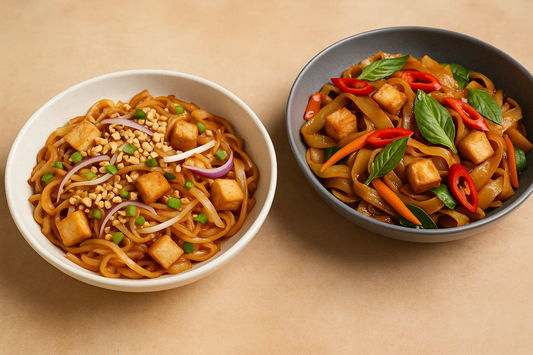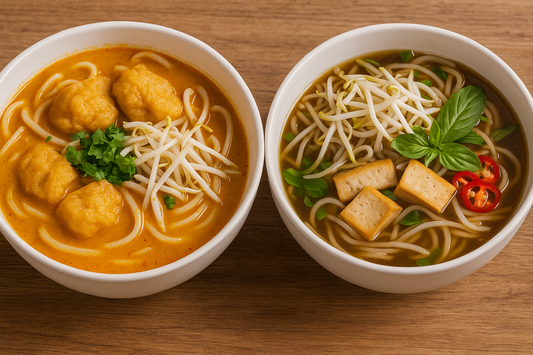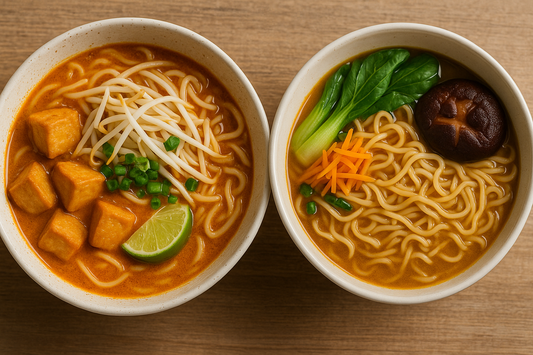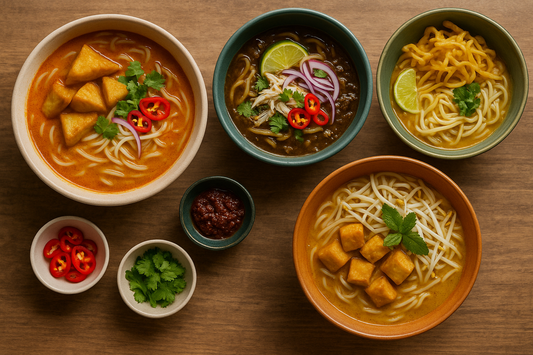Sticky rice pudding is a delightful and indulgent dessert that has captured the hearts and taste buds of many. The rich, creamy texture of the pudding combined with the natural sweetness of the rice makes it a truly irresistible treat. In this article, we will explore the allure of sticky rice pudding, its origins and why it is considered a comfort food. We will also provide a step-by-step guide to making this delectable dessert, offer serving suggestions, and provide tips for storing and reheating your pudding.
Understanding the allure of sticky rice pudding
Sticky rice pudding has a unique charm that sets it apart from other desserts. The combination of soft, tender rice grains and a velvety pudding consistency creates a delightful texture that is both comforting and satisfying. The taste is equally enchanting - the sweet and creamy flavours meld together to create a heavenly dessert that is sure to leave you craving for more. Whether served warm or chilled, sticky rice pudding is a true delight for the senses.
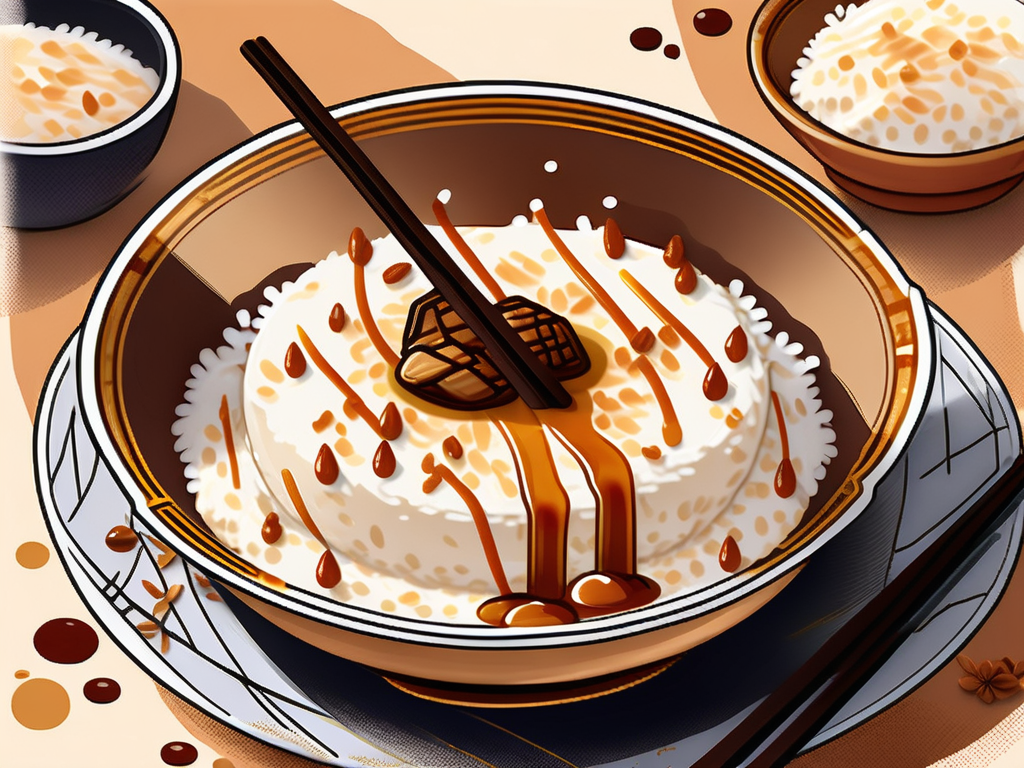
The origins of sticky rice pudding
The origins of sticky rice pudding can be traced back to various cultures around the world. In Asian cuisine, sticky rice is a staple ingredient and is often used in both sweet and savoury dishes. In Thailand, sticky rice is known as "khao niao" and is commonly used to make traditional desserts, including sticky rice pudding. Similarly, in Latin American countries such as Mexico, sticky rice pudding is a popular dessert known as "arroz con leche". These cultural variations highlight the widespread appeal and adaptability of sticky rice pudding.
Why sticky rice pudding is a comfort food
Sticky rice pudding has earned its status as a comfort food for many reasons. Firstly, it is a nostalgic dessert that reminds us of childhood memories and family traditions. The process of making sticky rice pudding often involves slow cooking and stirring, which creates a sense of warmth and homeyness. Additionally, the soft and creamy texture of the pudding provides a comforting sensation that can soothe the soul. This combination of taste, texture, and nostalgia makes sticky rice pudding the perfect comfort food.
Moreover, sticky rice pudding has been cherished for its nutritional benefits throughout history. Sticky rice is a rich source of carbohydrates, providing a steady release of energy that can keep you feeling full and satisfied for longer periods. Additionally, it contains essential minerals such as manganese and magnesium, which play a vital role in maintaining a healthy body. These nutritional qualities make sticky rice pudding not only a delicious treat but also a nourishing option for those seeking a balanced diet.
Furthermore, the versatility of sticky rice pudding is worth mentioning. While it is delightful on its own, it can also be enhanced with a variety of toppings and accompaniments. From fresh fruits like mangoes and berries to indulgent additions like caramel sauce or chocolate shavings, the possibilities are endless. This adaptability allows sticky rice pudding to cater to different tastes and preferences, making it a dessert that can be enjoyed by everyone.
Gathering your ingredients
Before delving into the cooking process, it is important to gather all the necessary ingredients. To make a delicious sticky rice pudding, you will need the following:
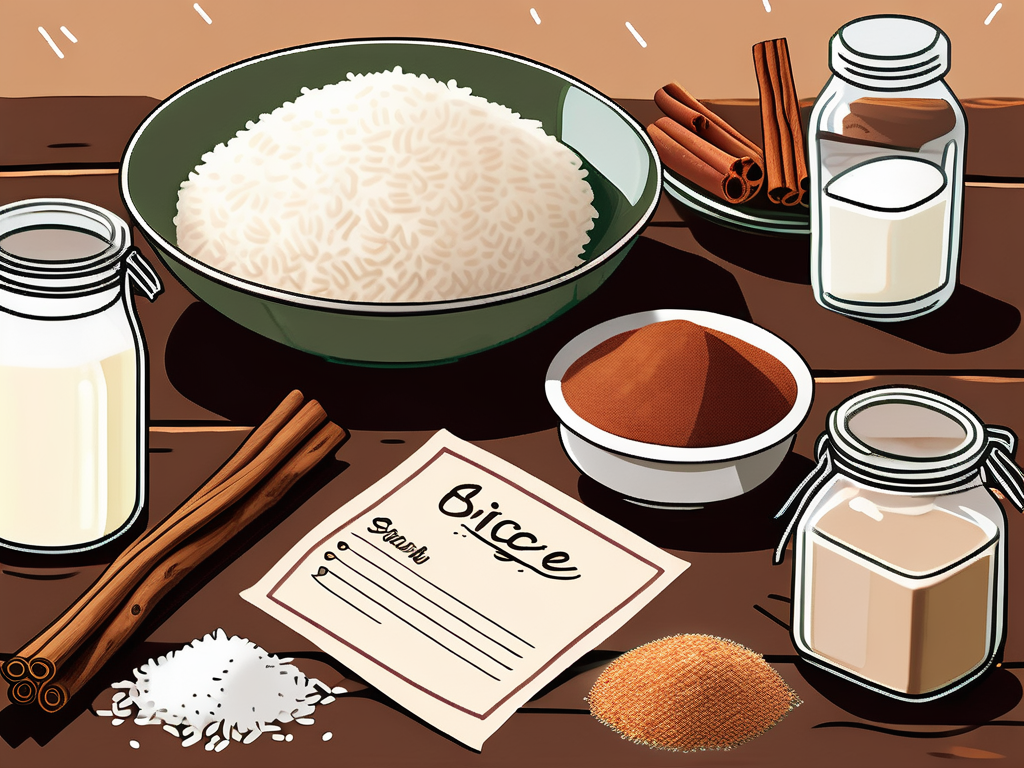
Creating a delectable sticky rice pudding is not just about the ingredients but also about the quality and origin of each component. For a truly exceptional dish, consider sourcing organic or fair-trade ingredients where possible. This not only enhances the flavour of the pudding but also supports sustainable and ethical practices in food production.
Choosing the right type of rice
The choice of rice is crucial in achieving the perfect sticky consistency for your pudding. Look for short-grain rice varieties such as Arborio or Thai glutinous rice. These varieties have a higher starch content, which helps to create the desired sticky texture.
Delving deeper into the world of rice, you may come across specialty varieties such as black glutinous rice or Japanese sushi rice. These unique types of rice can add a depth of flavour and colour to your pudding, elevating it from a simple dessert to a gourmet delight.
The role of (plant-based) milk and sugar in your pudding
Milk and sugar are key ingredients that contribute to the richness and sweetness of the pudding. Opt for soy milk for a creamy texture and use your preferred sweetener, whether it be white sugar, brown sugar, or even a natural alternative like honey or maple syrup, to achieve the desired level of sweetness.
When selecting the plant-based milk for your sticky rice pudding, consider exploring different options such as coconut milk or almond milk for a unique twist on the classic recipe. These alternative milks can impart a subtle nuttiness or tropical flavour to the pudding, adding a new dimension to this traditional dessert.
Step-by-step guide to making sticky rice pudding
Now that we have gathered our ingredients, it's time to embark on the journey of creating a delectable sticky rice pudding. Follow these simple steps:
Preparing your rice for cooking
Start by rinsing the rice under cold water to remove any excess starch. Soaking the rice not only helps it absorb moisture but also enhances its texture, giving the pudding a more satisfying mouthfeel. The grains swell up during soaking, ensuring a plump and tender bite in every spoonful. After soaking, drain the rice thoroughly to remove any excess water before cooking.
For an added depth of flavour, some chefs recommend toasting the soaked rice in a dry pan before cooking. This simple step can bring out nutty undertones in the rice, elevating the overall taste of the pudding.
The cooking process explained
In a large saucepan, combine the soaked rice and milk, along with any additional flavourings such as vanilla extract or cinnamon. The choice of milk can greatly impact the final taste of the pudding - while full-fat milk provides a rich and creamy indulgence, coconut milk can add a tropical twist to the traditional recipe. Experiment with different types of milk to discover your perfect combination.
Cook the mixture over low heat, stirring occasionally, until the rice is tender and the pudding has thickened. This slow and gentle cooking process allows the rice to release its starch gradually, resulting in a lusciously creamy texture. The aromas of the simmering pudding will fill your kitchen, creating a comforting atmosphere that is as delightful as the dessert itself. Be patient during this stage, as the transformation of rice into a velvety pudding may take up to an hour, but the end result will be well worth the wait.
Serving suggestions for sticky rice pudding
Sticky rice pudding can be enjoyed in a variety of ways, whether it be as a standalone dessert or paired with complementary ingredients. Here are some serving suggestions:

Traditional ways to serve sticky rice pudding
In Thai cuisine, sticky rice pudding is often topped with a sprinkle of toasted sesame seeds or served with fresh mango slices for a tropical twist. In Latin American traditions, a dusting of ground cinnamon or a drizzle of dulce de leche adds a touch of decadence. Experiment with different toppings and flavours to create your own traditional serving style.
Creative twists on serving sticky rice pudding
If you're feeling adventurous, why not try serving your sticky rice pudding with a sprinkle of crushed nuts, or a drizzle of vegan chocolate sauce? The versatility of this dessert lends itself to endless possibilities, allowing you to tailor the presentation to suit your taste and creativity.
For a truly indulgent experience, consider incorporating exotic fruits such as lychee or passionfruit into your sticky rice pudding. The burst of tangy sweetness from these fruits can elevate the dish to new heights, adding a refreshing contrast to the rich and creamy texture of the pudding.
Another innovative way to serve sticky rice pudding is by infusing it with aromatic spices such as cardamom, nutmeg, or star anise. These warm and fragrant spices can create a sensory journey for your taste buds, transporting you to distant lands with each spoonful. Pair this spiced version of sticky rice pudding with a scoop of vanilla ice cream for a delightful fusion of flavours and textures.
Tips for storing and reheating your pudding
Leftover sticky rice pudding can be stored in the refrigerator for up to three days. To maintain its creamy consistency, cover the pudding with cling film, ensuring it touches the surface to prevent a skin from forming. When reheating, place the desired portion in a microwave-safe bowl and heat in short intervals, stirring in between, until warmed through. Alternatively, you can reheat the pudding on the stovetop over low heat, stirring constantly. Enjoy the leftovers within two days of reheating for the best flavour.
How to properly store leftover pudding
When storing leftover pudding, it is important to keep it in an airtight container in the refrigerator to prevent it from absorbing any unwanted odors. This ensures that the pudding stays fresh and maintains its delightful taste and texture.
Reheating your pudding without losing flavour
The key to reheating sticky rice pudding without losing any of its flavour is to do so gradually and with care. Avoid overheating the pudding, as this can cause it to become dry or lose its creamy consistency. By reheating in short intervals and stirring regularly, you can enjoy the same delicious taste and texture as if it were freshly made.
Now, let's dive deeper into the world of sticky rice pudding and explore its fascinating history. Did you know that sticky rice pudding, also known as rice porridge or rice pudding, has been enjoyed for centuries in various cultures around the world? Its origins can be traced back to ancient China, where it was considered a luxurious dish reserved for special occasions.
In medieval Europe, rice pudding gained popularity as a comforting and nourishing dessert. It was often flavoured with spices such as cinnamon, nutmeg, and cardamom, and sweetened with honey or sugar. The dish was highly regarded for its ability to warm the body during cold winters and provide a sense of comfort and indulgence.
Over the years, sticky rice pudding has evolved and adapted to different culinary traditions. In Thailand, for example, it is known as "khao niao mamuang" and is served with fresh mango slices, creating a delightful combination of flavours and textures. In India, rice pudding, or "kheer," is often flavoured with saffron, rose water, and nuts, resulting in a fragrant and rich dessert.
So, the next time you savour a bowl of sticky rice pudding, take a moment to appreciate its rich history and the diverse ways it has been enjoyed throughout the ages. Whether you choose to stick to the traditional recipe or experiment with different flavours and toppings, one thing is for sure – sticky rice pudding will always be a timeless and comforting treat.
Craving the comfort of sticky rice pudding but looking for a plant-based alternative? Look no further than Pam Pam! Our ready-to-heat Asian meals are not only delicious and easy, but they're also crafted with the same authentic ingredients and aromatic spices that make traditional dishes like sticky rice pudding so beloved. With fresh chillies, lemongrass, coriander, and cardamom, our meals are a celebration of flavour. Conveniently stored in the freezer and snap-frozen to lock in nutrients, Pam Pam's plant-based options are perfect for a quick and satisfying meal. Shop online today and discover the ease and delight of plant-based Asian cuisine with Pam Pam.






